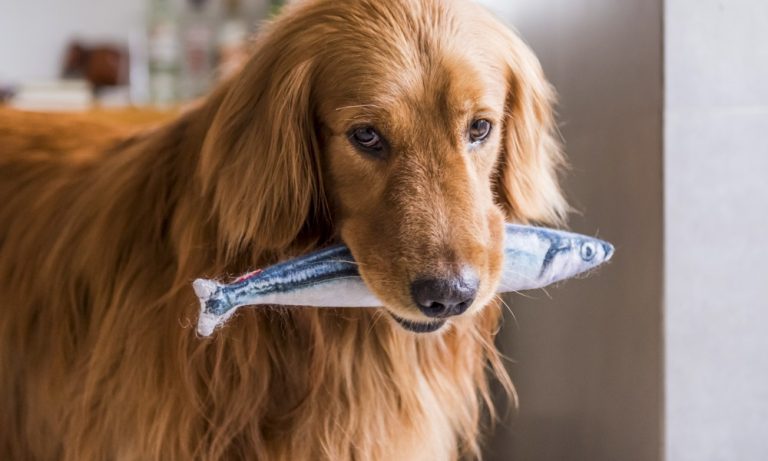Can Dogs Eat Chicken Heads?
No, dogs should not eat chicken heads. Chicken heads contain bones that can be difficult for your dog to digest and may cause an obstruction or even puncture the intestines if swallowed. Additionally, there is a risk of salmonella poisoning from raw or undercooked chicken heads due to the bacteria present on them.
Furthermore, many commercial pet foods have been specifically formulated with balanced nutrition in mind and do not require additional supplements like chicken heads. If you want to give your dog some extra protein sources, consider offering cooked white meat without skin or bones instead of feeding them raw chicken head parts.
Dogs can sometimes eat chicken heads, but it is not recommended. Chicken heads may contain harmful bacteria that could make your dog sick, and the bones are too hard for them to digest. It’s better to feed your pup cooked chicken without the head or skin attached as a much safer option.
Can Dogs Eat Chicken Heads And Feet?
Dogs can eat chicken heads and feet, but it’s important to understand the risks involved. Chicken heads and feet contain a lot of fat, which could lead to an upset stomach for your pup. Additionally, these parts may contain parasites or other contaminants that are harmful to their health.
While some dogs may enjoy eating chicken heads and feet as treats or snacks, you should always consult your vet before feeding them this type of food. If you do decide to feed your dog chicken heads and feet, make sure they’re cooked thoroughly in order to reduce any potential risk of bacteria contamination.
Additionally, watch out for choking hazards like bones – even small ones can be dangerous if swallowed! Lastly, keep portions small so that your pup doesn’t become overweight from too much fatty food in their diet.
With proper care and moderation, there is no reason why dogs shouldn’t be able to safely consume chicken heads and feet occasionally as a treat – just remember to err on the side of caution when doing so!
What Parts of a Chicken Can a Dog Eat?
Dogs can safely consume several parts of a chicken as long as the chicken is cooked thoroughly and is not seasoned with harmful ingredients. Here are the parts of a chicken that dogs can eat:
-
Chicken Breast: Skinless, boneless chicken breast is a lean source of protein and is generally safe for dogs when cooked plain. It’s a popular choice for dog owners who want to provide their pets with a protein-rich treat or to add lean protein to their dog’s diet.
-
Chicken Thighs and Drumsticks: Like chicken breast, chicken thighs and drumsticks can be fed to dogs as long as they are cooked without bones and skin. Remove any bones, as cooked bones can splinter and pose a choking hazard or cause gastrointestinal issues.
-
Chicken Liver: Cooked chicken liver is a highly nutritious organ meat that can be given to dogs in moderation. Liver is rich in vitamins, minerals, and protein. It should be cooked thoroughly and not be a significant portion of your dog’s diet, as excessive consumption can lead to vitamin A toxicity.
-
Chicken Gizzards: Cooked chicken gizzards are another organ meat option for dogs. They are a source of protein and can be included in a well-balanced diet. Ensure they are cooked thoroughly and cut into appropriate sizes for your dog.
-
Chicken Hearts: Cooked chicken hearts are nutrient-rich and can be a part of a balanced diet for dogs. They are high in protein and contain essential nutrients like taurine. Be sure to cook them thoroughly before feeding.
-
Chicken Necks: Chicken necks can be fed to dogs as long as they are cooked, boneless, and cut into manageable pieces. Avoid feeding cooked bones, as they can splinter and cause harm.
-
Chicken Broth: Plain, homemade chicken broth can be added to your dog’s food as a flavorful and hydrating addition. Ensure it’s free from additives like onions, garlic, or excessive salt.
It’s important to prepare chicken for your dog without any seasoning, spices, or additives, as many seasonings and spices can be harmful to dogs. Also, always cook chicken thoroughly to kill any potential bacteria or parasites that might be present.
Is Chicken Head And Neck Good for Dogs?
When it comes to feeding your canine companion, there is a lot of debate surrounding chicken head and neck. Some people believe that these parts of the chicken are beneficial for dogs, while others feel they should be avoided due to possible health risks. So what’s the truth?
Ultimately, when you’re deciding whether or not to give your dog chicken head and neck, it’s important to consider both the pros and cons. On one hand, some experts suggest that chicken heads can provide additional vitamins and minerals such as calcium which could benefit a pup’s bones and teeth.
Additionally, since they contain cartilage—which can help support joint health—they may also help keep an older dog more mobile in their golden years.
However on the other hand, many veterinarians caution against feeding chicken heads because there is potential for choking hazard (especially if not thoroughly cooked) as well as contamination from salmonella poisoning or food-borne illness caused by bacteria like E coli.
Thus its best to talk with your vet before making any decisions about introducing this kind of “treat” into your pet’s diet!
Can Dogs Eat the Insides of Chickens?
The answer is yes — as long as the chicken has been properly cooked, the insides are safe for your dog to consume. However, there may be some health risks associated with eating chicken innards, so you should always consult with your veterinarian before feeding any type of food or treat to your canine companion.
That being said, raw or undercooked meats can contain bacteria such as salmonella which could cause an upset stomach or worse if ingested by a dog.
It’s also important to note that certain parts of chickens such as the liver and heart contain more fat than other cuts of meat so you should limit how much you give your pup at one time in order not to overload their system with too much fat all at once.
When choosing which internal organs from a chicken your dog can have, gizzards tend to be among the safest options because they don’t have many fats like livers do and are not highly spiced like hearts might be.
Just remember – when introducing new foods into your pup’s diet (including anything from inside a chicken), start off small amounts slowly and watch closely for signs of digestive distress before deciding whether or not it’s something they enjoy consuming on regular basis!
Can Dog Eat Raw Chicken Head?
Feeding a dog a raw chicken head is not recommended for several reasons:
-
Choking Hazard: Chicken heads, like other small bones and parts of poultry, can pose a choking hazard for dogs, especially smaller breeds. The bones in a chicken head are relatively small and can splinter easily, which increases the risk of choking or causing injury to the dog’s throat or digestive tract.
-
Bacterial Contamination: Raw chicken, including the head, can carry harmful bacteria such as Salmonella and Campylobacter. Feeding raw chicken to dogs increases the risk of bacterial contamination, which can lead to foodborne illnesses in both dogs and humans.
-
Nutritional Imbalance: While some proponents of raw feeding argue that dogs can eat various parts of poultry, including heads, as part of a balanced raw diet, it’s essential to ensure that such a diet is carefully planned and nutritionally balanced. Feeding an unbalanced diet can lead to nutritional deficiencies over time.
-
Regulatory Concerns: Depending on your location, there may be regulations and guidelines regarding the feeding of raw meat to dogs due to public health concerns. It’s important to be aware of and follow any local regulations related to feeding raw food to dogs.
If you are interested in incorporating raw food into your dog’s diet, it’s essential to consult with a veterinarian or a veterinary nutritionist to create a well-balanced and safe feeding plan. They can provide guidance on selecting appropriate raw ingredients, handling them safely, and ensuring that your dog’s nutritional needs are met.
How to Cook Chicken Heads for Dogs?
Cooking chicken heads for dogs, while not a common practice in many regions, can be done if you want to include them in your dog’s diet. However, it’s crucial to take certain precautions to ensure the chicken heads are safe for your dog to consume. Here’s a general guideline on how to cook chicken heads for dogs:
Ingredients and Materials:
- Chicken heads
- Pot or saucepan
- Water
Instructions:
-
Select and Prepare the Chicken Heads: Ensure that you are using fresh, unseasoned chicken heads. Remove any feathers and clean the heads thoroughly. You can also trim away any sharp or hard parts, such as the beak.
-
Boil the Chicken Heads: Place the cleaned chicken heads into a pot or saucepan. Add enough water to cover the heads completely. You can add a bit of chicken broth or plain water for added flavor.
-
Cook Thoroughly: Bring the water to a boil, then reduce the heat to a simmer. Allow the chicken heads to simmer for at least 20-30 minutes, or until they are fully cooked. Cooking the heads thoroughly helps kill any potential bacteria and makes the bones safer for your dog to consume.
-
Cool: Remove the chicken heads from the water and allow them to cool completely. You can refrigerate or freeze them for later use, or you can serve them to your dog once they have cooled to a safe temperature.
-
Serve in Moderation: Chicken heads can be a treat for your dog, but they should not make up a significant portion of their diet. Feed them in moderation, as part of a balanced diet, and ensure that the heads are an appropriate size for your dog to handle safely.
-
Monitor Your Dog: When introducing a new food like chicken heads into your dog’s diet, monitor them for any adverse reactions, such as digestive upset or allergies. If your dog experiences any issues, discontinue feeding chicken heads and consult your veterinarian.
Remember that while some dogs may enjoy chicken heads as an occasional treat, they are not necessary for your dog’s diet, and many commercial dog foods provide all the essential nutrients your pet needs.
Always consult with your veterinarian before making significant changes to your dog’s diet or introducing new foods, especially if you are unsure about the safety or appropriateness of a particular ingredient.
Conclusion
Generally, it is not recommended for owners to feed their dogs chicken heads as they can cause a variety of health problems. That being said, there are some benefits such as providing extra calcium and more digestible proteins.
Ultimately, it is up to the owner’s discretion whether or not they choose to feed their dog chicken heads. Regardless of what you decide in that regard, make sure your pup stays away from any raw bones or poultry products that have been contaminated with bacteria.





